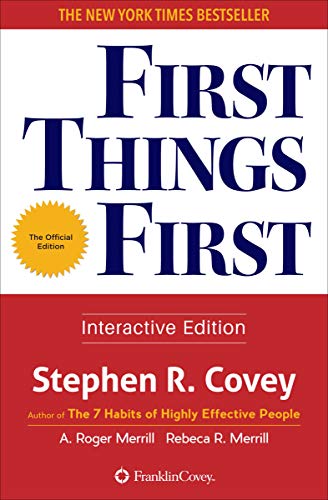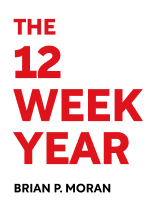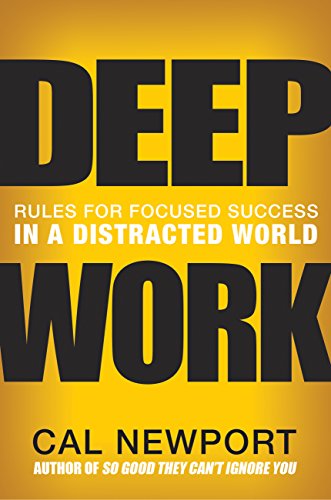

This article gives you a glimpse of what you can learn with Shortform. Shortform has the world’s best guides to 1000+ nonfiction books, plus other resources to help you accelerate your learning.
Want to learn faster and get smarter? Sign up for a free trial here .
Do you feel like there’s never enough time to do everything you want to do? How can you fit a meaningful job, time with your loved ones, and leisure time into your schedule?
Modern life is busy, and with so many things vying for our time and attention, it’s hard to be on top of everything. But if you have a time management system that works for your lifestyle and personal preferences, being on top of everything that’s important isn’t that difficult.
Here are three time management systems that can help you reclaim control over your time.
The Importance of Time Management
You must invest your time wisely to accomplish your tasks successfully. You, like everyone else on the planet, are used to feeling like you just don’t have enough time to do everything you want to do. But the truth is, this belief is usually a defense mechanism against facing the truth—you don’t manage your time well. Effective time management is often the difference between average achievers and high achievers.
People who have accomplished amazing feats in business, sports, or other arenas do not have more time than you do. They merely made better choices about how they spent their time, which is the foundation of good time management. Your choices from one minute to the next dictate how well you use your time.
Studies show that most people waste more valuable work time in a day than they realize. This time is wasted dealing with the various distractions people and technology throw your way while you’re trying to work. One study found it took 15 minutes for workers to get back to their tasks when they stopped to check emails or text messages. Another found that 28% of the average employee’s day is spent managing interruptions in workflow and time taken to refocus.
Having a time management system can help you minimize wasted time, avoid procrastination, and prioritize tasks that contribute most to your goals.
Stephen Covey’s Time Management Matrix
One of the most common problems with time management is that we are often distracted by urgent tasks—things as trivial as a ringing phone or as critical as a health emergency. As a result, we don’t have enough time to spend on important tasks which move us closer to our goals and values. That is where Stephen Covey’s time management system comes in.
Stephen Covey’s time management system emphasizes important tasks, which ultimately move you closer to your goals and values. Here’s how it works: Imagine a square divided into four quadrants: One axis measures whether something is urgent or not, and the other axis measures whether it is important or not.
| Urgent | Not Urgent | |
| Important | Quadrant IUrgent and Important | Quadrant IINot Urgent, but Important |
| Not Important | Quadrant IIIUrgent but Not Important | Quadrant IVNeither Urgent nor Important |
Quadrant I
Quadrant I is both urgent and important. This quadrant contains emergencies and problems that require your immediate attention. This can include health emergencies, a work deadline, or a broken-down car.
You can’t ignore Quadrant-I needs because they are important, and life inevitably includes urgent matters, but you can prevent some things from becoming urgent if you attend to important tasks that include prevention and maintenance.
Quadrant II
Quadrant II is important, but not urgent—the “Quadrant of Quality.” This is where you do prevention, maintenance, long-term planning, relationship building, and personal leadership activities like evaluating your paradigms. Quadrant II activities could easily be put off for their lack of urgency, but they’re critical for shrinking the time you spend in Quadrant I. These tasks greatly benefit your life in the long term and help you take greater control of how you spend your time.
There are six types of Quadrant II activities that can greatly improve your life but that many people tend to neglect.
- Strengthening relationships
- Planning, organizing, and preparing
- Practicing self-care
- Capitalizing on new opportunities
- Engaging in personal development activities
- Empowering yourself and others
Quadrant III
Quadrant III is urgent, but not important—the “Quadrant of Deception.” The urgency of Quadrant III activities can make them appear important, but they don’t actually align with your values or contribute to achieving your goals. Quadrant-III activities include making phone calls, going to meetings that lack purpose, and receiving unexpected guests. Often these tasks are important to other people, and you may feel pressured into doing them to meet others’ priorities and expectations.
Quadrant IV
Quadrant IV is neither urgent nor important—the “Quadrant of Waste.” These activities add no value to your life; even recreational activities don’t belong here because true recreation is a restorative and valuable Quadrant-II activity. Quadrant IV includes gossiping, watching mindless television, or passively scrolling through social media.
You may use Quadrant IV out of confusion about what’s truly important or as a mental escape, although in reality, it makes no substantial improvement in your life or mental and emotional relief.
Applying the 4 Quadrants to Real Life
The time management matrix is meant to be flexible: It takes into account that real life doesn’t always fit neatly into one of four quadrants. With this in mind, here are some tips to help you apply it to your life:
1. Prioritize activities within Quadrant I: Facing multiple Quadrant I tasks that are all urgent and important can be overwhelming. So how do you decide which Quadrant I task to tackle first? Divide Quadrant I into a Quadrant 1A and 1B to determine which tasks are most urgent.
2. Determine why you’re in Quadrant I: It’s not bad to be in Quadrant I; in fact, it’s inevitable. But it’s important that you’re aware of why you’re in Quadrant I. If you’re there because you’re focused more on the urgency of Quadrant-I activities rather than on their importance, then when you work through all the Quadrant-I matters, a lack of focus on importance will lead you to Quadrant III, matters that are urgent but not important. On the other hand, if you’re there because of a focus on importance, then when you get through all the urgent activities you’ll move on to Quadrant II, matters that are important but not urgent. You want to spend most of your time in Quadrant II, not III.
3. Create time for Quadrant II: This can be difficult, especially if you’re in a cycle of urgency. The first place you can start spending less time is Quadrant III; recognize when urgent tasks are not important, and stop wasting your time on them. As you do this more, you’ll gain enough time to put more energy into Quadrant II, which will naturally reduce your Quadrant I tasks.
4. Focus on Quadrant II, especially if you work in a Quadrant-I environment: Some people have jobs that inherently involve a lot of time in Quadrant I, including firefighters, doctors, police officers, and news reporters. Paradoxically, these people especially need to make an effort to attend to Quadrant II, which reduces and eliminates some Quadrant I tasks while preventing you from getting completely worn out from dealing with urgent problems and crises.
Time Blocking
The time blocking method is a time management system that integrates the functionality of a calendar with a to-do list. It involves chunking a period of time—typically a day or week—into smaller segments that are scheduled for specific tasks.
In The 12 Week Year, authors Brian P. Moran and Michael Lennington suggest scheduling your time into three blocks: strategic, buffer, and breakout blocks.
The Strategic Block
The strategic block is one three-hour chunk of time per week dedicated to priority tasks. Spend a few minutes reflecting on your vision to help sharpen your focus, and spend another few minutes reviewing your plan and progress data to see how you’re doing. The rest of the time should be put toward the necessary daily tasks to reach your weekly goal.
The Buffer Block
The buffer block is a time to work on the miscellaneous activities that disrupt your workflow. When you group these activities into one chunk of time, you reduce the frustration of constant interruptions and the time wasted when you perform these tasks at random moments. Check emails, answer phone calls, meet with employees, read the news, and respond to communications for 30 minutes to one hour once or twice a day depending on the nature of the activities.
The Breakout Block
The breakout block is a three-hour period of rest to allow your mind and spirit to rejuvenate. Rest is essential for maintaining a strong focus when you’re working. You should try to schedule these weekly. Take a hike, watch TV, spend time with friends and family, or engage in other activities that relax you so you can come back to work energized and focused.
The Model Week
Your model week is an elaboration of your weekly plans of attack. At the beginning of each week, write down everything you have to accomplish in your work and personal life that week. Then, add those activities to your weekly calendar.
First, schedule your strategic block on a day you know you’ll have the time to focus for three hours. Then, schedule your buffer blocks each day. If you are including a breakout block that week, pencil that in. Finally, schedule the rest of your activities for each of the seven days.
Make planning your model week a routine. You’ll be more organized and focused for success if you intentionally manage your time on a weekly basis.
Half-Hour Time Blocking
In Deep Work, Cal Newport recommends managing your time in half-hour blocks. With Newport’s method, the goal is to prioritize what he calls “deep work”—focused, uninterrupted, undistracted work on a task that pushes your cognitive abilities to their limit. He outlines three steps to planning your time in a deep work-supporting way:
- Plan your tasks: Node down all the tasks you need to complete and note what time you plan to complete them. Then, break down your tasks into half-hour blocks, making sure to schedule buffer blocks to handle emergencies or tasks that run over their allotted time. (In 2020, Newport released The Time-Block Planner, which helps guide readers to create schedules broken down into half-hour increments and in alignment with their goals.)
- Quantify depth: The next step is to estimate and note the “deep work” complexity of each task. As a rule of thumb, imagine how long it would take to train a smart college grad to do the task—the more time, the deeper the work. Once you’ve finished quantifying the depth of your day’s tasks, look over your schedule. If your day is full of shallow tasks, Newport urges you to consider how you can replace those with deeper work.
- Reflect on and tweak your schedule: Newport suggests reviewing the accuracy of your time blocks at the end of each day. This will help you set more accurate goals and expectations in the future.
Final Words
Many of us feel as though there’s never enough time—not enough time for work, not enough time for family, not enough time for ourselves. While time is indeed a limited resource, most of us have enough time—we just don’t manage it well.
If you enjoyed our article about time management systems, check out the following suggestions for further reading:
Writer and journalist Oliver Burkeman claims that humans make themselves miserable by mistakenly believing they should be able to get through all their tasks, to-dos, and chores in the time they’ve allotted them. The reality is that no matter what time management systems they implement, humans will never have perfect control over how they spend their time. Instead, people must accept that they’ll never get as much done as they’d like and work within the parameters of a finite life. In Four Thousand Weeks, Burkeman suggests a few ways to do this that not only relieve us of the guilt of not getting everything done but also let us lead happier, more fulfilled lives.
The Getting Things Done (GTD) program is designed to help you do the things you have to do with less time, energy, and effort so you can do more of the things you want to do. It takes every task and reminder out of your head and into an external system of lists and files so that you can focus all your mental energy on the task at hand. You’ll identify the next action step for every item on your to-do list so that when you have time available you don’t have to think—just do. By gaining command of your day-to-day obligations, you’ll create more time and energy to work toward your long-term goals.

Want to fast-track your learning? With Shortform, you’ll gain insights you won't find anywhere else .
Here's what you’ll get when you sign up for Shortform :
- Complicated ideas explained in simple and concise ways
- Smart analysis that connects what you’re reading to other key concepts
- Writing with zero fluff because we know how important your time is









